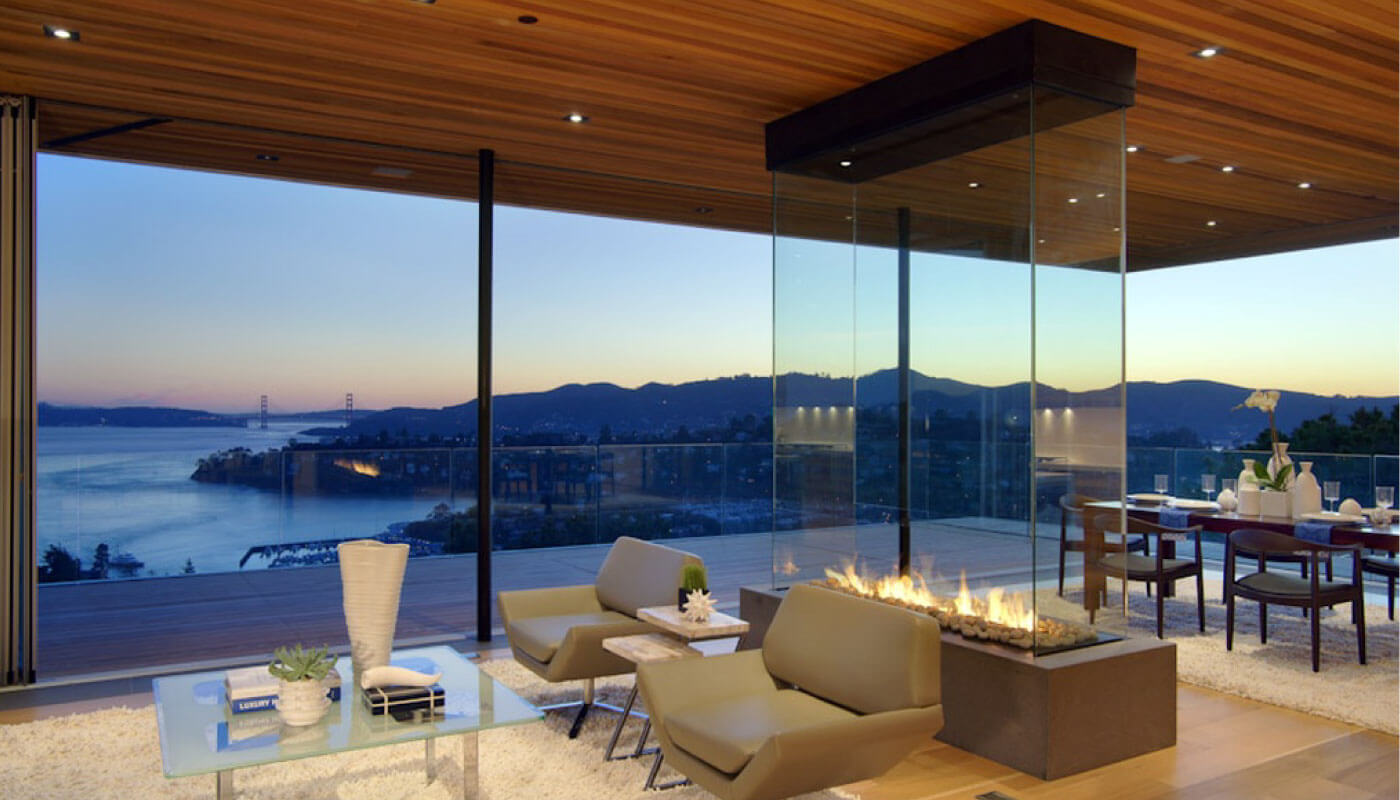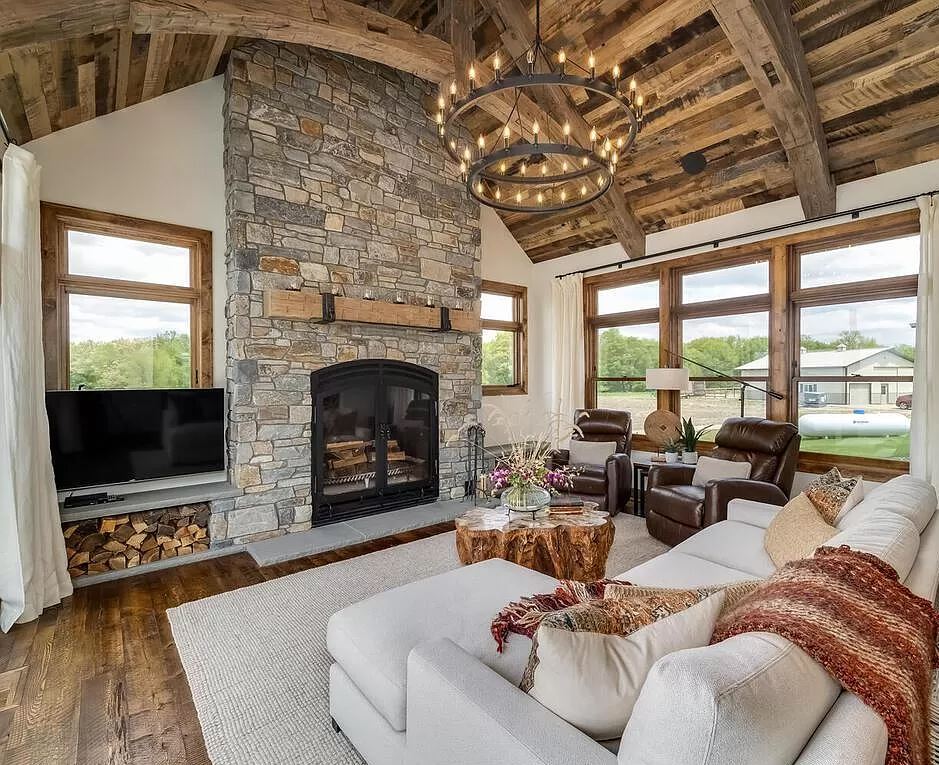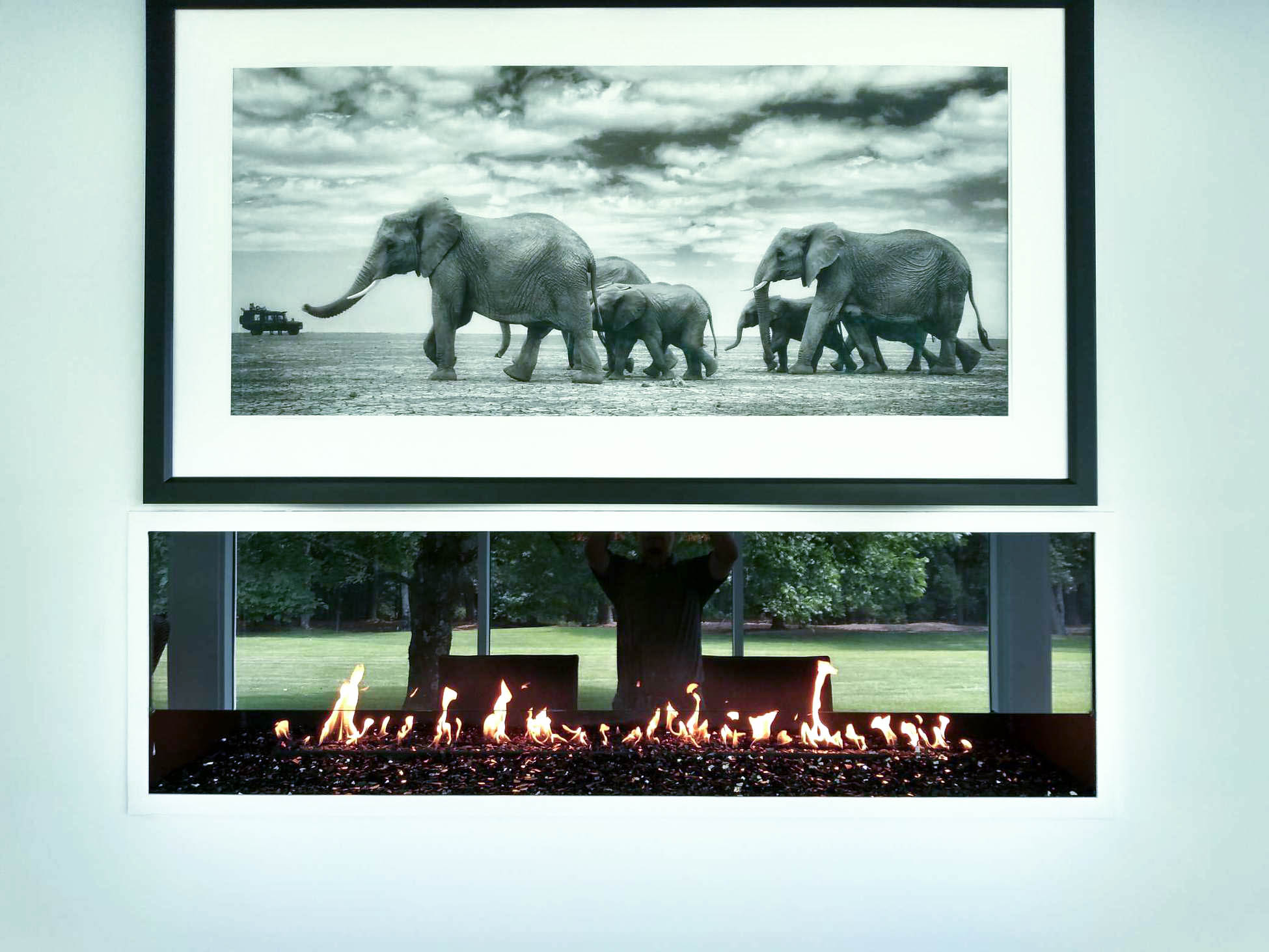
Choosing the right type of fireplace for your new home can be a bit overwhelming. With all the different types of fireplaces and fuel options available, how can you be sure you’re making the right choice? Whether you’re looking for the classic ambiance of a wood-burning fireplace or the convenience of a gas model, there’s a lot to consider.
This guide will help simplify things by exploring the various fireplace options available. We’ll dive into the traditional appeal of wood fireplaces as well as the modern advantages of gas fireplaces. You’ll find out what each type offers in terms of look, cost, and how it fits into your home.
Types of Fireplaces and What They Offer
When you start looking for a fireplace, you’ll find several kinds to choose from, each with its own set of benefits, so the best choice for you depends on what you’re looking for in a fireplace.
For this guide, we won’t be looking at electric fireplaces; we don’t make them, and we don’t recommend them to anyone looking for a true fireplace experience. We’re focused on the real deal: fireplaces with an actual fire burning.
Let’s look at the different types and what makes each one special.
Wood-Burning Fireplaces
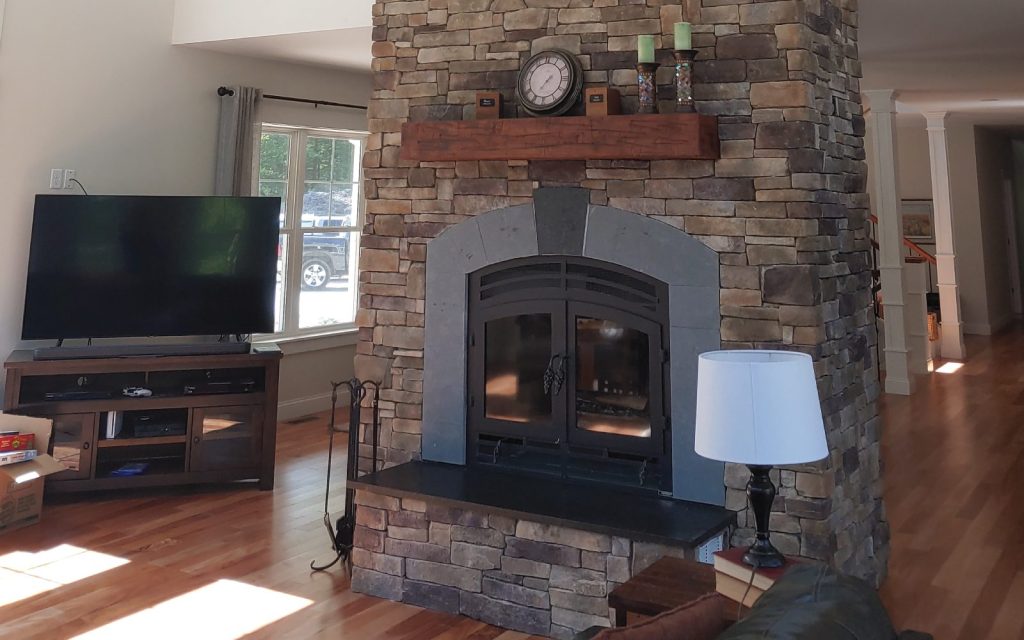
What Wood Offers:
- Natural Ambiance: The unmistakable crackling sound and the smell of the burning wood create a nostalgic, cozy atmosphere.
- Timeless Look: Adds a traditional and timeless element to your home’s design.
- Engaging Experience: Tending to a wood fire adds a level of interaction and enjoyment, making it a focal point for family and friends.
- Outdoor Connection: Wood fireplaces bring a touch of the great outdoors inside.
The cost of wood-burning fireplaces can vary widely depending on the size, viewing area, style, finishing options, and more. Acucraft’s American Single Door Wood Fireplace starts at $5,200, and the Hearthroom starts at $6,550.
Gas Fireplaces
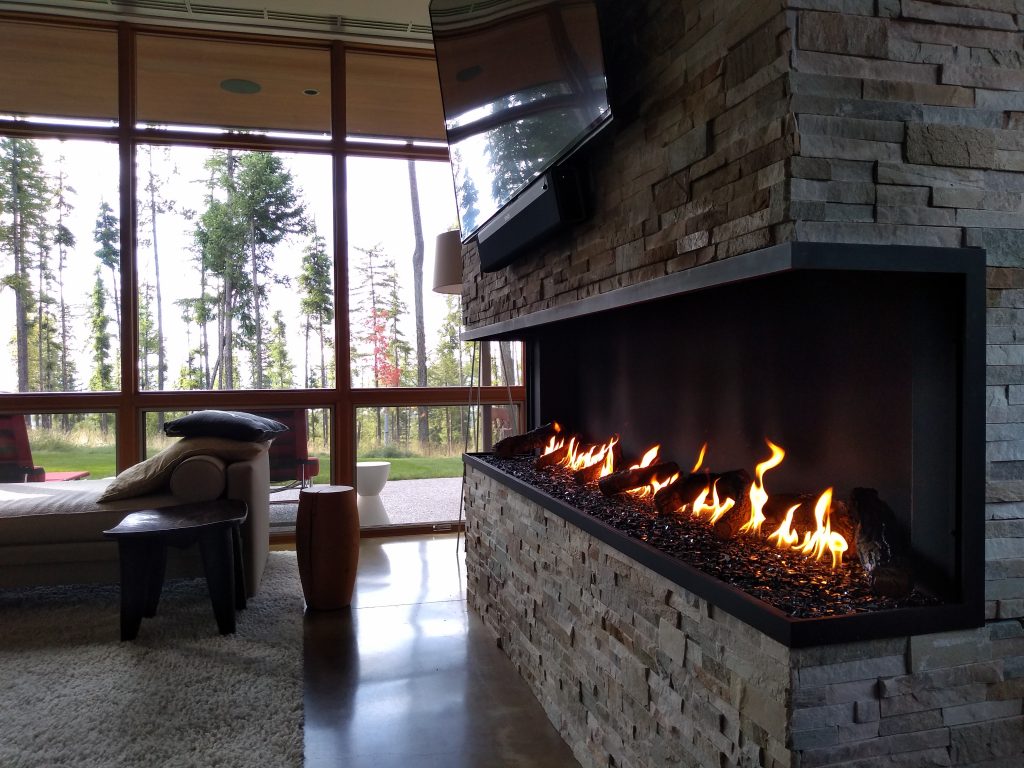
What Gas Offers:
- Convenience: Gas fireplaces are easy to turn on and off, and there’s no need to clean up ash or tend to the fire while it burns.
- Design Versatility: Available in a wide range of styles and designs, gas fireplaces can seamlessly integrate into any home decor, from traditional to ultra-modern.
- Continuous Innovation: Featuring cutting-edge technology, gas fireplaces come with options like different glass and stone media, logsets, adjustable flame height, and more, allowing for a customized ambiance.
- Low Maintenance: Gas fireplaces are relatively low maintenance, requiring only occasional inspections. You won’t need to chop wood, clean ash, or worry about having your chimney cleaned.
- Ambiance Without Hassle: Gas offers the cozy glow of a fire with a consistent flame appearance, without the effort involved in building and maintaining a wood fire.
Because there are so many customization options for gas fireplaces, costs can vary even more than wood-burning fireplaces. Acucraft’s Timeless Series starts at $4,995, the Signature Series starts at $5,700, and a one-of-a-kind custom unit depends on the size and style.
Pros and Cons of Different Fireplace Fuel Types
When it comes to picking a fireplace for your home, there are three main types of fuel to think about: wood, natural gas, and propane.
Wood
Wood is the classic choice, as it connects us to the timeless tradition of gathering around the fire, sharing stories, and enjoying moments of quiet reflection. Wood fireplaces bring the classic ambiance: the crackling sound, the smell of burning wood, and the warm glow.
However, this authentic experience comes with its share of responsibilities and demands. To maintain a wood fireplace, you’ll need to ensure a steady supply of firewood. There are a lot of considerations when it comes to firewood: do you want hardwood or softwood? What wood species is right for how long you want to burn? What’s the moisture content? Is your firewood coming from a sustainable source?
Once you have your stockpile, you’ll also need a place to store it so that it stays dry. Proper storage is essential to help wood maintain its quality. If you plan to store it outdoors, you’ll need a cover to protect it from the wind and weather. It’s also important to stack the wood loosely to allow air circulation, which will help dry out the wood and prevent mold.
Natural Gas
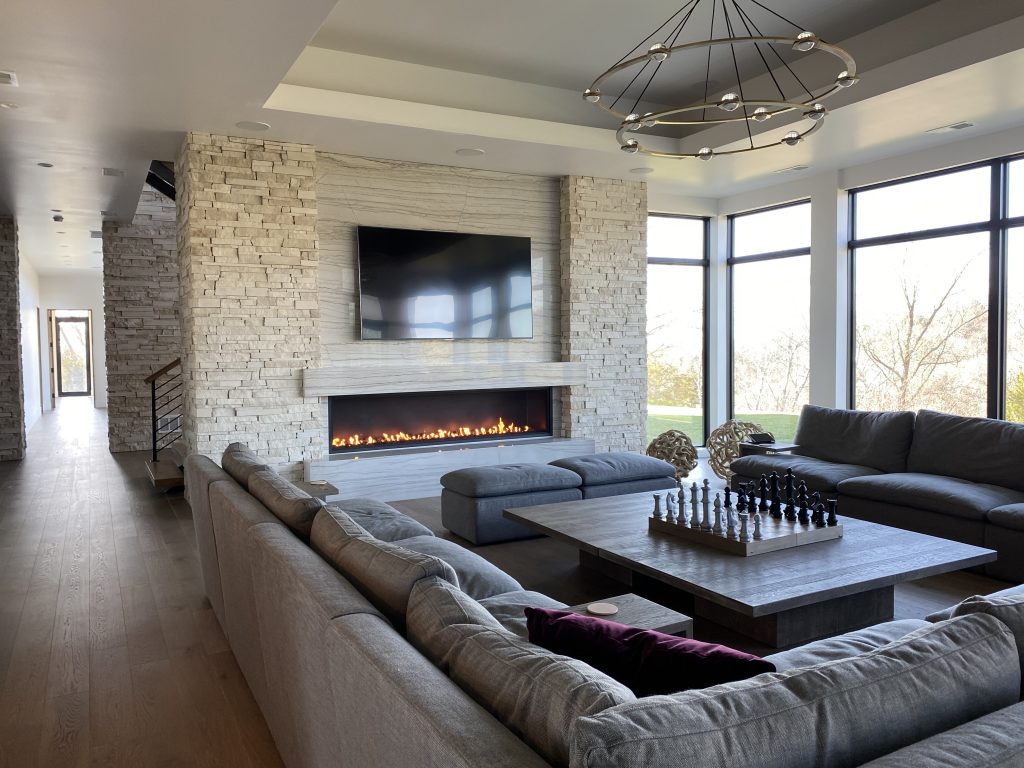
Economically, natural gas fireplaces have several advantages, too. For homes already equipped with a natural gas line, these fireplaces are typically more cost-effective than alternatives like wood or propane. The cost of natural gas tends to be lower and more stable than that of propane. On the other hand, if your home doesn’t already have a natural gas line in place, it can be costly to install one just for your new fireplace.
It’s also important to acknowledge what’s lost when choosing natural gas over wood. You don’t get the sensory experience of crackling logs with a natural gas fireplace. For some people, that sensory element is a significant part of the fireplace’s overall appeal because it contributes to the overall ambiance of the space. However, if you want the visual ambiance of a wood-burning fireplace but with the conveniences of a gas fireplace, a gas fireplace with logs gives you the best of both worlds. We offer several logset options as well as driftwood pieces to match any style.
Propane Gas
Propane fireplaces offer a similar level of convenience as natural gas models, making them an attractive option for those who don’t have access to natural gas. Like their natural gas cousins, propane fireplaces can be ignited instantly with a push of a button, providing a clean and consistent flame that requires little to no maintenance.
One of the most significant advantages of propane fireplaces is their versatility. Since they don’t require a natural gas line, they can be installed in virtually any home, perfect for rural or remote areas where natural gas isn’t an option.
However, propane typically comes at a higher cost compared to natural gas. This increased cost is due to factors like its production and delivery methods, making it more expensive over time. Additionally, unlike natural gas, which is delivered continuously via pipelines, propane needs to be periodically refilled, so you’ll have to keep a close eye on your propane levels, especially during the colder months.
Remember, whether you choose wood or a gas alternative, ultimately, the best choice depends on your needs, preferences, and the practicalities of fuel available in your area. Each fireplace and fuel type offers its own advantages, whether it’s the authenticity and tradition of wood, the ease and cleanliness of natural gas, or the flexibility of propane. As you make your decision, consider not just the immediate allure of each option but also the long-term implications for maintenance, fuel availability, cost, and the potential increase in your home’s value.
Need help getting started? Reach out to us today for a free fireplace consultation.
